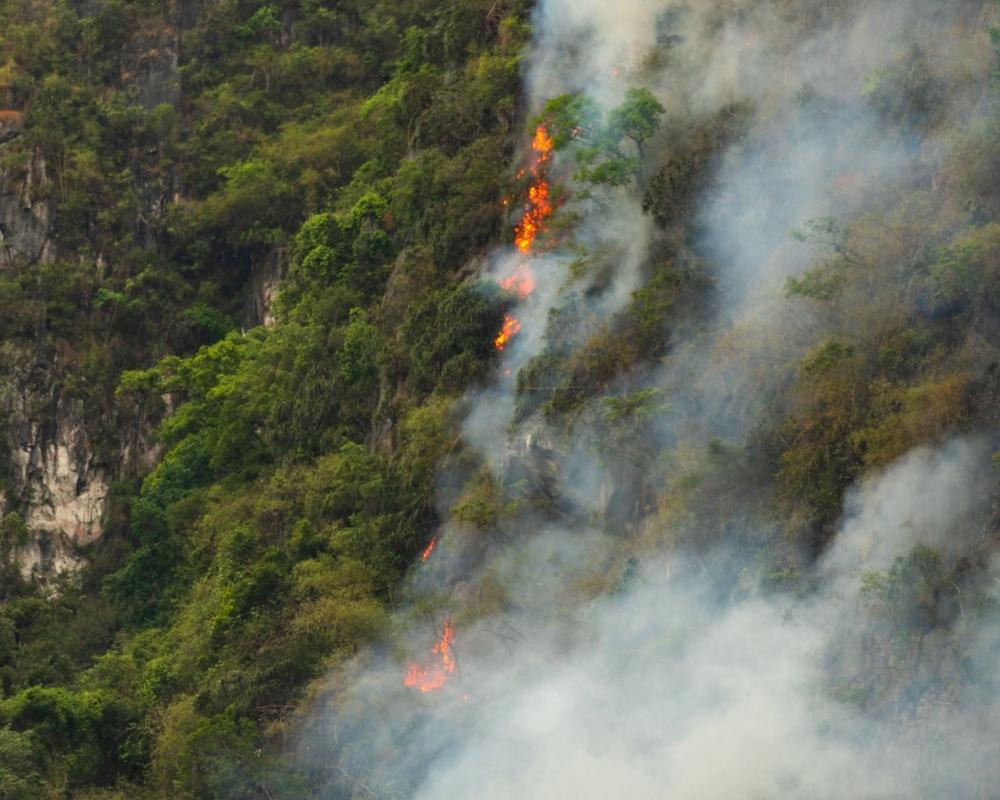Casella UK
Wolseley Rd, Kempston,Bedford MK42 7JY
+44(0)1234844100
info@casellasolutions.com

As wildfires sweep across the west of the United States and Canada, causing loss of life, urgent evacuations and mass disruption, environmental conditions linked to climate change are making wildfire seasons longer and more severe worldwide.
Large wildfires can increase air pollution over thousands of square miles. In the western US, wildfire smoke has taken a devasting toll on the region’s air quality, accounting for half of all air pollution during the worst wildfire years.1
Wildfires can cause large temporary increases in outdoor airborne particles and gaseous air pollutants such as carbon monoxide, nitrogen dioxide, formaldehyde, and acetaldehyde. The particulate matter found in the smoke can deposit deep in the lung airways and even the bloodstream, resulting in adverse effects on respiratory, cardiovascular and neurological health.
To help protect public safety, communities need to be better informed and take steps to monitor the quality of the air they breathe.
Tim Turney, Global Marketing Manager at Casella, a leading manufacturer of air monitoring equipment, shares his expert insight into wildfire smoke and air quality.
How can air quality be monitored?
There are various websites and apps that provide air quality monitoring. However, the data sets are taken from government agencies, crowd-sourced monitors and satellite imagery which are limited in frequency and often cannot pinpoint specific geographic locations. Wildfires can cause drastically varying smoke levels in any given location, depending on how close you are, the wind direction and speed, and the size of the fire. So, while you may think that this information is reliable, the only way to accurately assess air quality and gather actionable data is by using an air monitoring solution that provides location-specific data in real-time.
Who should monitor air quality directly?
The particulate generated from wildfires is a general risk to public health, as it will drastically elevate particulate levels downwind of the fires. In addition, the smoke can stay in the atmosphere for days, weeks or even months and is capable of travelling vast distances. As a result, the smoke not only poses an imminent risk to those in the area and beyond, but a long-term health risk for others in the form of air pollution.
In the short-term, vulnerable people are particularly at risk, such as those with existing health conditions or the elderly. Organisations or groups in locations where large numbers of people are congregated, such as schools, hospitals, local communications and offices could benefit from monitoring air quality locally.
How can the data be used to protect health and safety?
Accurate air quality data is crucial as wildfire smoke can dissipate to a level where it is not visible in the air, but particulate levels are still high. Having localised and frequent readings can aid decision-making that protects health and safety. For example, if particulate levels are hazardous, employers can send outdoor workers home or a vulnerable person can choose to stay inside. Precise monitoring equipment such as Casella’s Guardian 2 can alert users via email and SMS when particulate levels are elevated, allowing more people to understand the air they’re breathing accurately.
How does it work?
Monitoring air quality requires one or several pieces of equipment such as the Guardian 2, depending on the size of the area being monitored. The Guardian2 is ideal for fixed locations within communities to alert users when particulate levels are elevated due to wildfires. The device also monitors wind speed and direction, which is of paramount importance in the case of a wildfire.
On the other hand, the Microdust Pro is a hand-held particulate monitor that can instantly detect dangerous concentrations of airborne particles for spot checks and walk-through surveys or when performing a continuous evaluation of fast-changing environments.
Ultimately, an environmental monitor helps achieve early detection of air contaminants, helping to reduce the exposure to those in the area and surrounding communities. Having access to real-time, near-reference data allows individuals and organisations to make decisions that will support health and keep more people safe.
References:
1. https://www.theguardian.com/world/2021/jan/19/wildfires-air-pollution-western-us